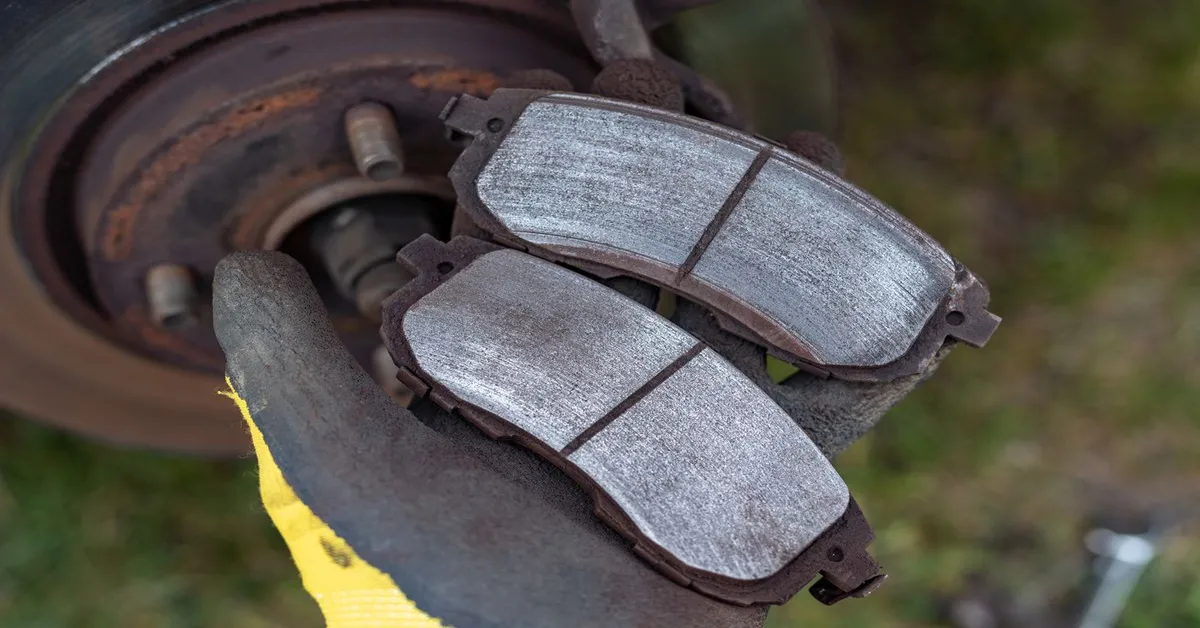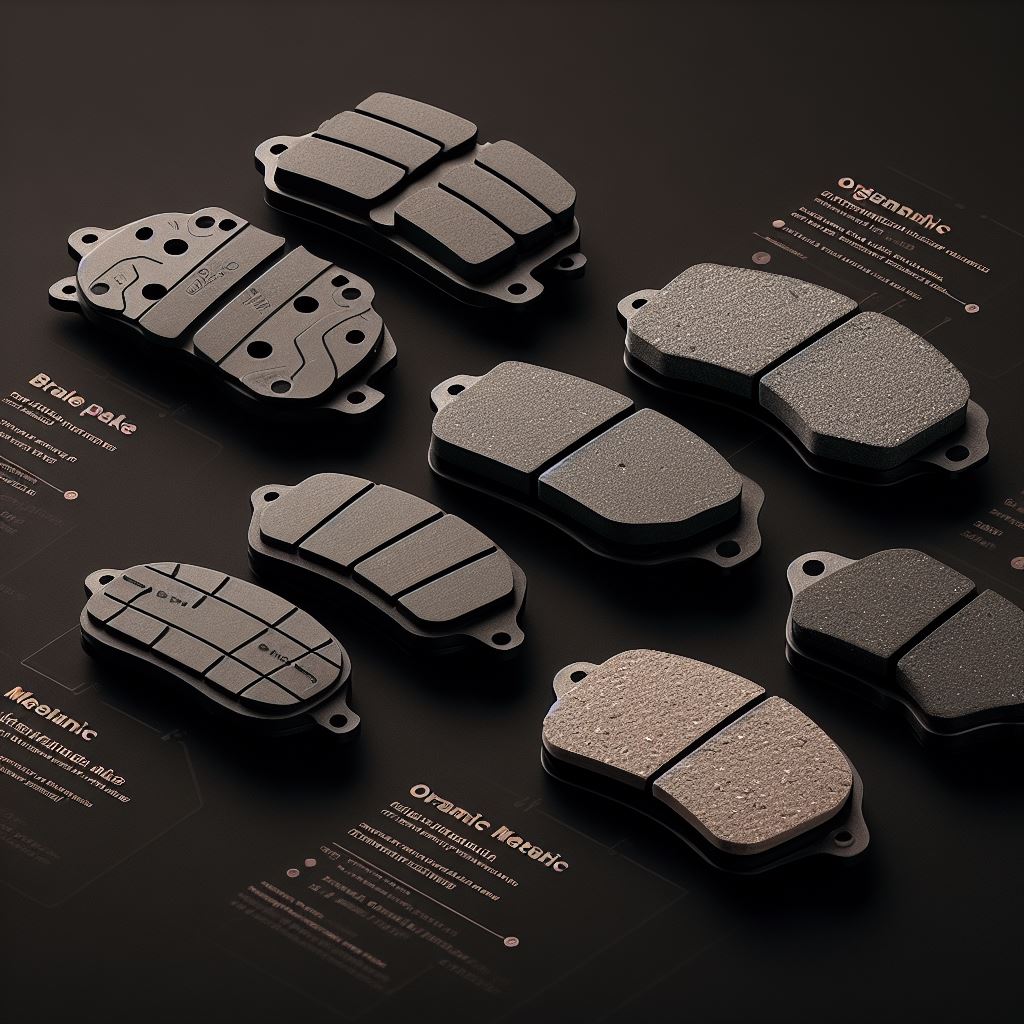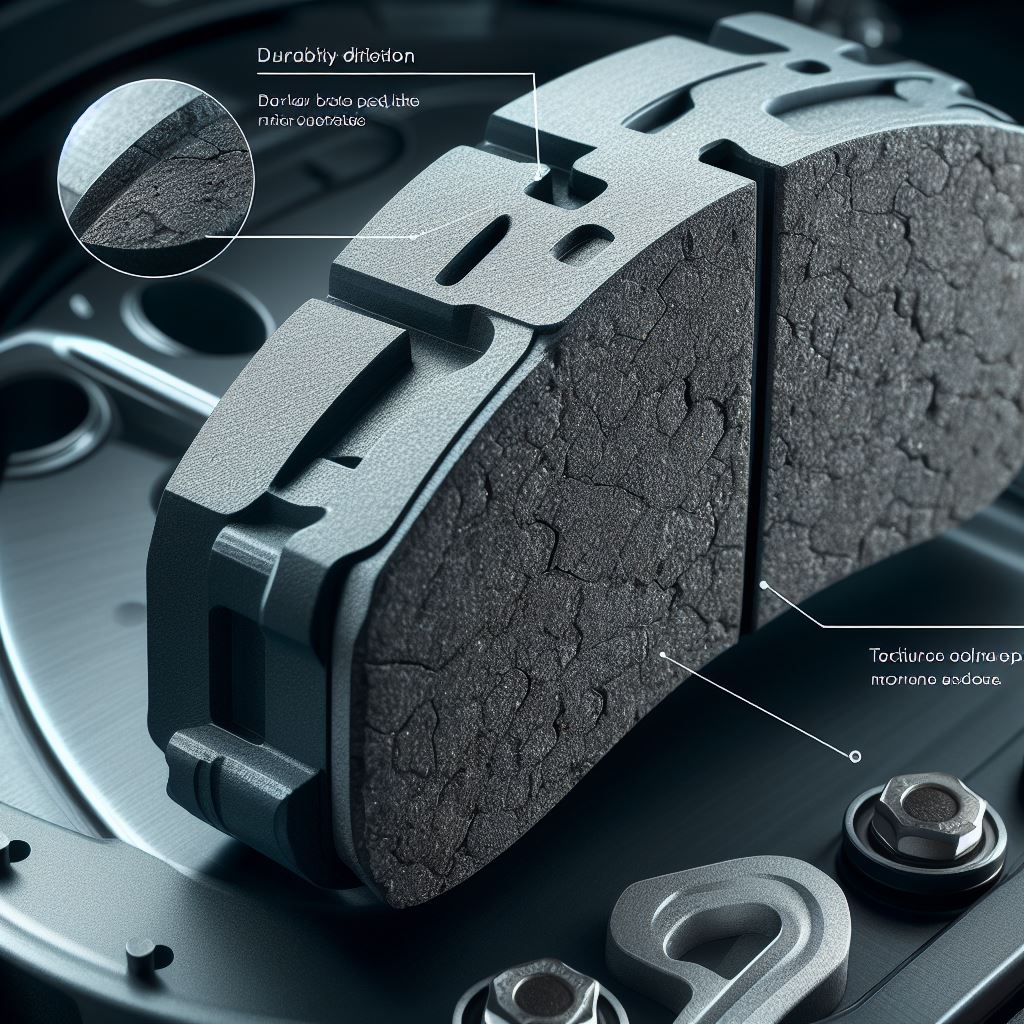Are you wondering why your brake pads wear out at different rates? It can be frustrating to have one pad wear down much faster than the other, leading to uneven braking and potentially costly repairs. But fear not, as we are here to uncover the reasons behind this phenomenon. In this post, we will discuss the various factors that contribute to uneven wear in brake pads and how you can prevent it.
From driving habits to environmental factors, we will dive into the details of why brake pads wear differently. So, buckle up and let’s explore the world of brake pads together.

Driving Habits
The wear and tear of brake pads is a common issue that every driver faces at some point in their vehicle’s lifespan. However, have you ever wondered why your brake pads wear differently? In this blog section, we will explore the various factors that contribute to uneven brake pad wear and how you can prevent it.
Driving Habits: One of the primary reasons for uneven brake pad wear is our driving habits. Aggressive driving, such as sudden braking and accelerating, can put excessive strain on the brake pads, causing them to wear down faster. Frequent driving in stop-and-go traffic can also contribute to uneven wear, as the constant use of the brakes can cause them to overheat and wear out more quickly.
Road Conditions: The condition of the roads we drive on also plays a significant role in the wear and tear of our brake pads. Rough and bumpy roads can cause the brake pads to wear down faster, as the constant friction between the pads and the rotors can cause them to wear unevenly.
Driving on unpaved roads or through potholes can also accelerate brake pad wear. Weight and Cargo: The weight of your vehicle and the amount of cargo you carry can impact the wear and tear of your brake pads.
The heavier the vehicle, the more force is required to slow it down, which can cause the brake pads to wear down faster. Similarly, carrying heavy cargo can also put additional strain on the brakes and lead to uneven wear.
Quality of Brake Pads: The quality of the brake pads you use also plays a crucial role in how they wear. Low-quality brake pads may have a shorter lifespan and wear down more quickly, resulting in uneven wear. It is always recommended to invest in high-quality brake pads from reputable brands to ensure longevity and even wear.

Type of Brake Pad Material
When it comes to the maintenance of your vehicle, one of the most important components to keep an eye on is the brake pads. These small but mighty pieces play a crucial role in ensuring your safety on the road. However, you may have noticed that your brake pads wear differently, even though they are made from the same material.
This can be frustrating and raise the question, “why would brake pads wear differently?” In this blog section, we will explore the different types of brake pad materials and how they can affect the wear and tear of your brakes. Organic Brake Pads: The Gentle Giant Organic brake pads are made from a mixture of materials such as rubber, glass, and resin. They are the most common type of brake pad and are often used in everyday driving vehicles.
These pads are known for their gentle nature, making them ideal for daily driving. They are also budget-friendly and produce minimal noise when braking. However, one downside of organic brake pads is that they have a shorter lifespan compared to other materials.
This is because they are softer and wear down more quickly, especially in high-performance driving situations. So, if you find that your brake pads wear down faster than you expected, it could be because they are made from organic material. Semi-Metallic Brake Pads: The All-Rounder Semi-metallic brake pads are made from a combination of metallic and non-metallic materials.
They offer a good balance between performance, durability, and cost. These brake pads can handle higher temperatures and are more resistant to wear and tear, making them a popular choice for high-performance vehicles. However, semi-metallic brake pads can be noisy and produce more dust than organic brake pads.
This is due to the metallic materials, such as copper and steel, which can also cause more wear on the rotors. Ceramic Brake Pads: The High-End Option Ceramic brake pads are the most expensive type of brake pad material, but they also offer the best performance and longevity. They are made from a mixture of ceramic fibers, filler materials, and bonding agents, making them highly durable and resistant to heat and wear.
Environmental Factors
Environmental Factors That Affect Brake Pad Wear When it comes to maintaining our vehicles, one of the most important components to pay attention to are the brake pads. Responsible for bringing our cars to a safe and controlled stop, brake pads are subjected to a lot of wear and tear. However, have you ever noticed that some brake pads wear out faster than others? This is not just a random occurrence, as there are several environmental factors that can contribute to uneven brake pad wear.
In this blog section, we will dive into the reasons why brake pads may wear differently and what we can do to prevent it. Road Conditions: The Silent Culprit One major factor that can greatly affect brake pad wear is the type of road conditions you are driving on. If you frequently drive on rough or uneven roads, your brake pads are more likely to wear out faster.
This is because the constant jolting and vibration from these roads put more strain on the brake pads, causing them to wear down quicker. On the other hand, smooth and well-maintained roads will have less of an impact on brake pad wear. Driving Habits: The Not-So-Obvious Connection Another factor that many may not consider is our own driving habits.
Aggressive driving, such as constantly braking hard and accelerating quickly, can put significant strain on the brake pads. This is because sudden braking causes the brake pads to work harder and wear out faster. Additionally, frequent stops and starts in heavy traffic can also contribute to uneven brake pad wear.
By practicing safe and smooth driving habits, we can prolong the lifespan of our brake pads and save ourselves from having to replace them frequently. Weather Conditions: The Unpredictable Element Weather can also play a role in how quickly brake pads wear down. In areas with harsh winters, road salt and debris can build up on the brake pads, causing them to wear out faster.
This is because the abrasive particles can cause friction, leading to premature wear. On the other hand, extreme heat can also have a negative impact on brake pads as it can cause them to overheat and wear out faster. While we can’t control the weather, we can take preventative measures such as regularly washing our car and avoiding driving in harsh weather conditions.

Quality of Brake Pads
When it comes to the safety and performance of your vehicle, the quality of your brake pads plays a crucial role. These small but mighty components are responsible for bringing your car to a smooth and controlled stop, which is why it’s important to understand why they may wear differently.
Material Composition: One of the main factors that can affect the wear of brake pads is the material they are made of. Most brake pads are made from a combination of organic and metallic materials, each with their own advantages and disadvantages. Organic brake pads, often made from materials like rubber, carbon, and Kevlar, tend to be softer and less abrasive, resulting in less wear on both the pads and rotors.
On the other hand, metallic brake pads, made from materials like steel, copper, and iron, are more durable and have better heat dissipation, making them ideal for heavier vehicles or high-performance driving. However, they can also be more abrasive and cause more wear on the rotors.
Driving Habits: Another factor that can affect the wear of brake pads is your driving habits. Frequent braking and sudden stops can put a lot of strain on your brake pads, causing them to wear down faster. This is especially true for city driving, where traffic and stoplights are more prevalent.
On the other hand, highway driving at a consistent speed and minimal braking can result in less wear on your brake pads. So, if you find yourself stuck in traffic often, it may be a good idea to invest in high-quality brake pads that can withstand the constant stop-and-go.
Road Conditions: The condition of the roads you drive on can also play a role in the wear of your brake pads. Rough or uneven roads can cause more strain on your brake pads, leading to faster wear. Additionally, dirt, debris, and moisture can also get trapped between the pads and rotors, creating more friction and causing them to wear down quicker.
Conclusion
Brake pads, like humans, are not created equal. Some may have a heavy foot on the pedal, while others take it easy on the brakes. Some may drive on smooth roads, while others conquer treacherous terrains.
And just like how our shoe soles wear differently depending on our activities, brake pads also wear differently based on driving habits and road conditions. But fear not, for our driving style and road choices are not set in stone. With proper maintenance and care, we can help prolong the life of our brake pads and ensure that they wear evenly.
So, let’s hit the road responsibly and keep our brakes in top shape. After all, it’s better to be safe than sorry.
why would brake pads wear differently
| Driving Habits | Aggressive driving or frequently applying brakes can cause uneven wear. | Smooth and consistent braking can help prolong the life of brake pads. |
| Quality of Brake Pads | Low quality brake pads may wear faster due to inferior materials. | Investing in high quality brake pads can result in longer lasting pads. |
| Driving Conditions | Driving on rough or hilly terrain can cause more wear and tear on brake pads. | Driving on flat roads with minimal traffic can help reduce wear on brake pads. |
| Vehicle Weight | Heavier vehicles require more force to stop, resulting in faster brake pad wear. | Regularly checking brake pads on heavier vehicles is important for safety. |
| Brake System Maintenance | Neglecting to change brake fluid or calipers can lead to uneven wear on brake pads. | Regular maintenance and inspections can help prevent premature brake pad wear. |
| Weather Conditions | Driving in extreme weather such as heavy rain or snow can cause faster brake pad wear. | Adjusting driving techniques in severe weather can help prolong brake pad life. |
Key Takeaway
Overall, the key takeaway from this article is that there are various factors that can contribute to uneven wear in brake pads, such as driving habits, environmental conditions, and the quality of the brake pads. To prevent uneven wear and ensure optimal performance, it is important to practice safe driving habits, invest in high-quality brake pads, and regularly maintain your vehicle’s brake system.
Important Notice for readers
IMPORTANT NOTICE: Dear readers, before delving into our article on Why Brake Pads Wear Differently, we would like to inform you that the information provided is solely for educational purposes. We strongly advise consulting a certified mechanic for any brake-related issues and not attempting to fix them yourself. It is crucial to understand the importance of properly functioning brake pads, as they play a vital role in the safety of your vehicle and everyone on the road.
We hope this article serves as a helpful guide, but please prioritize your safety and seek professional assistance for any brake concerns. Remember, safety first!”
Frequently Asked Questions (FAQs)
What factors can cause brake pads to wear differently on a vehicle?
Some common factors that can contribute to uneven brake pad wear include driving habits, road conditions, vehicle weight, and brake system maintenance.
How often should brake pads be inspected for wear? A
It is recommended to have your brake pads inspected every 12,000-15,000 miles or as recommended by your vehicle’s manufacturer.
Can the type of brake pads affect how they wear on a vehicle?
Yes, different types of brake pads (such as ceramic, organic, or semi-metallic) can have different wear patterns and lifespans. It is important to choose the right type of brake pads for your specific vehicle and driving habits.
Is it normal for brake pads to wear differently on the front and rear wheels?
Yes, it is normal for the front brake pads to wear faster than the rear brake pads due to the weight distribution of most vehicles. However, if there is a significant difference in wear between the front and rear pads, it may indicate a problem with the brake system.
Can improper brake pad installation cause uneven wear?
Yes, if the brake pads are not installed correctly, they may not make proper contact with the rotors and can wear unevenly. It is important to have brake pads installed by a trained professional to ensure proper alignment and contact.
How can I prevent uneven wear on my brake pads?
Regularly inspecting and maintaining your brake system, driving with smooth and consistent braking, and choosing the right type of brake pads for your vehicle and driving habits can help prevent uneven wear on your brake pads.
Writers Bio
My name is Sarah Smith and I have been writing in the health and wellness niche for over 5 years. As a certified health coach and nutritionist, I have a deep understanding of the human body and how to achieve optimal health. My expertise lies in creating informative and engaging content that educates and empowers readers to make positive changes in their lives.
My writing skills include thorough research, clear and concise communication, and a knack for breaking down complex topics into easy-to-understand concepts. I am passionate about helping others live their best lives and I am excited to share my knowledge and experience with you.
